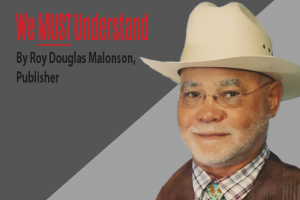Authoritarian regimes generally abolish or restrict civil liberties, concentrate political power, and impede and weaken free elections that allow for alternations of power. Authoritarian states might nominally contain democratic institutions such as political parties, legislatures, and elections, which are managed in such a way as to entrench authoritarian rule, for example gerrymandering and a restriction of social services, including education. Authoritarianism’s opposite is liberal democracy, which the bipartisan Freedom House, the oldest American institution defending global democracy, defines as encompassing much more than elections and majority rule. Liberal democracies are typified by governance based on the consent of the governed, accountable institutions, adherence to rule of law and respect for human rights. They have independent courts, an independent press, and a thriving civil society. Liberal democracies are open to changes in power, “with rival candidates or parties competing fairly to govern for the good of the public as a whole, not just themselves or those who voted for them.”
The path to authoritarianism usually first involves democratic backsliding, propelled by political figures and par-ties with authoritarian instincts who employ specific tactics. These factors are evident in Project 2025, which explicitly advocates politicizing independent institutions by replacing the federal bureaucracy with conservative activists and removing independence for many agencies. It advocates for gutting what it calls the “Deep State,” a conspiracy theory shared by the Project’s authors that blames civil servants for a coordinated effort to undermine a conservative agenda. Project 2025 claims to already be recruiting and training those who would replace career civil servants, with Project Director Paul Dans saying, “We want conservative warriors.”
Trump and many of his supporters have bought into the idea that this Deep State undermined his presidency, particularly regarding his relation-ship with Russia, and by sabotaging his policies. For example, the Project claims that “bureaucrats at the Department of Education inject racist, anti-American, ahistorical propaganda into America’s classrooms” and “bureaucrats at the State Department infuse U.S. foreign aid programs with woke extremism about ‘intersectionality’ and abortion.” Th ere is no evidence for these claims. Perhaps most ominous, Project 2025 targets the Department of Justice (DOJ) and the FBI. Th e Project states the following about the next president, “he will need to decide expeditiously how to handle any major ongoing litigation or other pending legal mat-ters that might present a challenge to his agenda” rather than allowing the DOJ and FBI to act independently to ensure the rule of law. A very real ear with Project 2025’s recommendations for the president to take control of investigations and prosecutions is that a president will abuse that power to target political rivals and those who disagree with their policies. Since Watergate, presidents of both parties have worked to ensure the independence of prosecutions from political influence.
.
Th ere are several elements of the project that spread disinformation about medical issues including CO-VID, abortion, sexual and reproductive health rights, sex education, and other issues, including DEI programs, climate change, civil rights, and marginalized communities, especially the LGBTQ+ community. Th e entire project is devoted to aggrandizing executive power by centralizing authority in the presidency, and a key aspect of democratic backsliding is viewing opposition elements as attempting to destroy the “real” community, an essential aspect to quashing dissent. Project 2025 paints progressives and liberals as outside acceptable politics, and not just ideological opponents, but inherently anti-American and “replacing American values.” Targeting vulnerable communities is a core tenet of Project 2025. Certain populations, in particular the LGBTQ+ community, are treated as deviants with ill intent rather than humans and Americans, and do not appear to exist within the far right’s framework of those deserving of fulsome human rights and protection from discrimination. Perhaps even more frightening, the left , the LGBTQ+ population, and the “woke,” are described as subversive elements aimed at destroying the country and its “real values.” Th e attack on the LGBTQ+ population is particularly ominous as recent research by UCLA’s Williams Institute has found a cor-relation between democratic back-sliding and diminution in the rights of LGBTQ+ communities. LGBTQ+ people are the canaries in the authoritarian coal mine.
Protect Democracy points to two other factors as key to growing authoritarianism: stoking violence and corrupting elections. Trump was notorious for stoking violence against political opponents, those who upheld Biden’s 2020 election win, and election workers. And during his campaign rallies where supporters violently at-tacked people, he verbally attacked immigrants and other communities, and even suggested he could shoot someone on 5th Avenue and get away with it. Trump’s words and his authoritarian ways have made the U.S. a more dangerous place based on an October 2023 poll by the Public Religion Research Institute. Nearly one in four Americans now believe political violence is justified to “save” the U.S., a higher number than just two years ago. Th e numbers grow even higher among Americans who believe that the 2020 election was stolen from Trump, to nearly one in every two people; among Americans who like Trump, to 41 per-cent; among Americans who believe in the white supremacist “Great Re-placement” conspiracy theory, to 41 percent; and among Americans who believe the core tenet of white Christian nationalism, that God intended America to be a new promised land for European Christians, to 39 percent.
Th is has real world implications. A Reuters investigation published in August 2023 showed that political violence began rising in 2016, in tandem with Trump’s leadership. Research from the National Counterterrorism Innovation, Technology, and Education Center (NCITE) published that same month found that threats against public officials are growing. And, of course, there was the January 6, 2021, Capitol insurrection, which was encouraged by Trump, and combined stoking mob violence with corrupting elections to prevent certification of the 2020 presidential results. NCITE found that the second most targeted group for political violence were elected officials and those who run or manage elections, who have been abandoning their positions in droves since 2020 due to threats from Trump supporters and the election denial movement that grew in the wake of Trump’s constant barrage of lies about the outcome of the 2020 election. Th is has profoundly harmed America’s election system.
Trump has been identified as a key factor in American democratic backsliding. Th e Stockholm-based Inter-national Institute for Democracy and Electoral Assistance found in 2021 that the U.S. “fell victim to authoritarian tendencies itself, and was knocked down a significant number of steps on the democratic scale.” Th e Institute pointed to Trump and called his baseless questioning of the legitimacy of the 2020 election results a “historic turning point” that “under-mined fundamental trust in the electoral process” and culminated in the Capitol insurrection. America’s V-Dem democracy index score shows a peak in 2015 and a sharp decline aft er 2016. In 2018, the U.S. was downgraded to a “fl awed democracy” by the Economist Intelligence Unit
in its annual Democracy Index report and by Freedom House.









